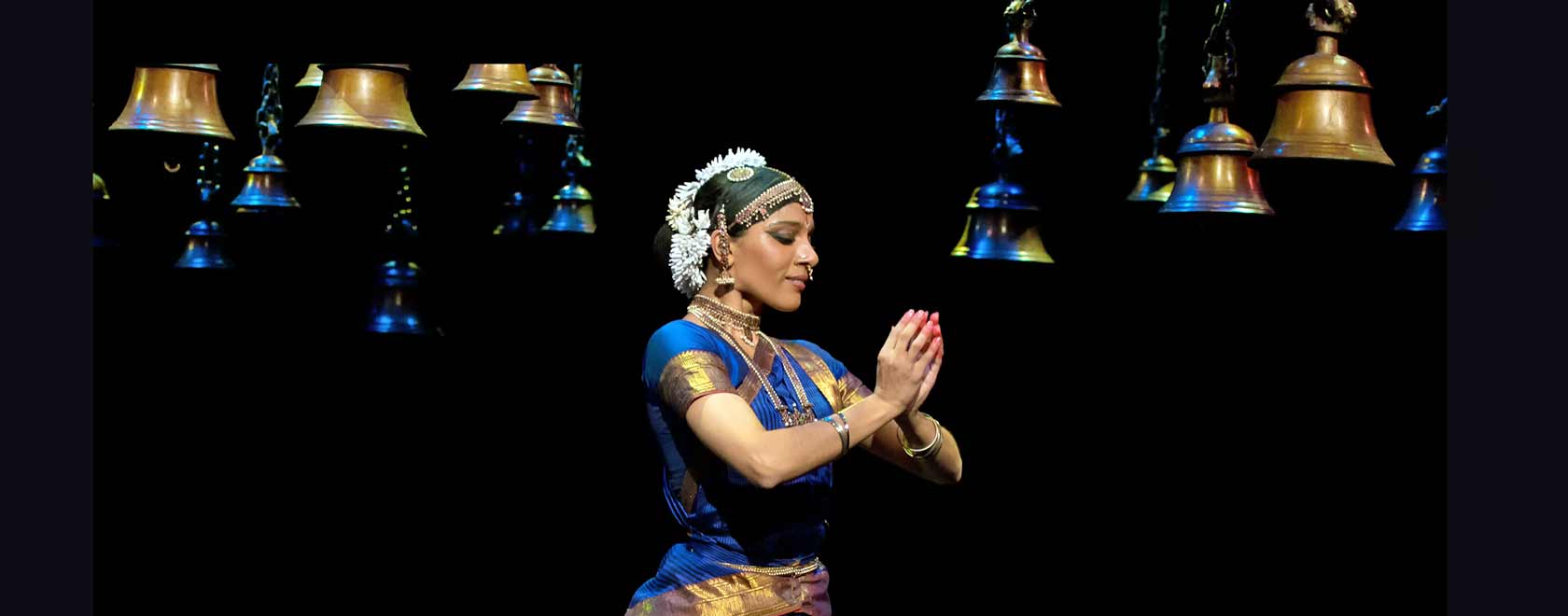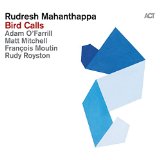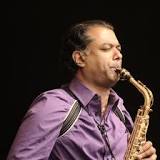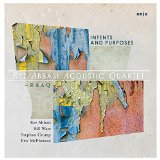
In recent times the term ‘fusion’ has become somewhat taboo. For some the idea of endeavoring to achieve a fusion comes with a red flag warning the participants that inevitably one form or entity is bound to dominate, or even take over the other. Such was hardly the case with a recent program that brought to the stage the Ragamala Dance Company’s East Indian dance conjoined with a jazz composer’s sensibility with jazz, and Carnatic music. As one of four commissioning organization partners, Clarice Smith Performing Arts Center (University of Maryland) helped foster the seamless synergy of the music of saxophonist-composer Rudresh Mahanthappa and the Ragamala Dance Company for a beautiful program titled “Song Of The Jasmine.”
The 75-minute program featured the live, stage left music ensemble (no recordings) of Rudresh Mahanthappa on alto saxophone, Rez Abbasi on guitar, Rajna Swaminathan on mridangam (a wooden double-headed drum of southern India origins), Raman Kalyan on Carnatic (wood) flute, and Anjna Swaminathan on Carnatic violin. Obviously Mahanthappa and Abbasi – Indian and Pakistani, born in the U.S. and though well-steeped in Carnatic music – were representative of the West. They achieved a very successful simpatico with the three Carnatic musicians; there were no lines of demarcation in this live music, an obvious testament to Rudresh and Rez’s ability to bring their Western instruments, ancestral/cultural memories, and improvisational skills to a Carnatic atmosphere, yet still maintain a strong sense of the art of jazz music. In keeping with jazz and Rudresh and Rez’s orientation, there were clearly large helpings of improvisation in his various saxophone passages and in Abbasi’s forays.
The exquisite elegance of East Indian dance was on vivid display in the marvelous turns of the five dancers of the Ragamala Dance Company. One of the key charms of East Indian dance is in the intricate hand movements and the stories they tell with the flick of an upturned wrist and the delicate movements of the fingers. The beauty of their finely detailed costuming is another essential element in Indian dance, including the expressive ankle bells; each detail conveying story and emotion. Their movement fusion with Mahanthappa’s composition and the expressions of the ensemble were exceptionally beautiful. Chief among the dancers, and Rudresh’s key collaborator, was Aparna Ramaswamy.
For novices to this dance form, like myself, the moderated post-concert Q&A with Rudresh, Aparna, and her mother, Ragamala co-director Ranee Ramaswamy was essential to gaining a greater understanding. This collaboration was owed in part to Aparna’s inquisitive imagination. She experienced a Rudresh Mahanthappa music performance at the Walker Art Center in Minneapolis, home base of Ragamala, and was so struck by the music that she sought this collaboration, which was then enabled in large part through the co-commissioning partnership of four prescient presenting organizations (The Walker, Clarice Smith, Krannert Center for the Arts (University of Illinois at Champaign-Urbana), and Lincoln Center Out of Doors. The guiding literary force behind this collaboration was the writings of the 8th-century Tamil mystic poet Andal, whose writings it is said erase any dichotomy between the sacred and the personal through seamless inter weavings of both. Clearly this was a call to a higher consciousness.
No overnight undertaking, once their agreement was forged it took eight months of conversation, composition, choreography, and rehearsal to bring this work to the public stage. That evening at Clarice Smith we were transformed by the power of the perseverance of these artists to realize this work.
It should be mentioned here that both Rudresh Mahanthappa and Rez Abbasi have remarkable new albums in release, both pictured below.



